Criteria for a Backyard Greenhouse
Four things to consider if you're planning to add a greenhouse to your property
-
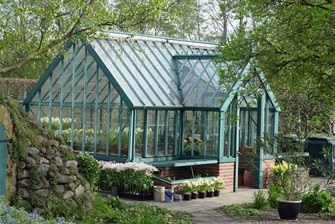 This is the ultimate passive solar greenhouse with plenty of thermal mass and twin cold frames flanking the front entry.
This is the ultimate passive solar greenhouse with plenty of thermal mass and twin cold frames flanking the front entry.
-
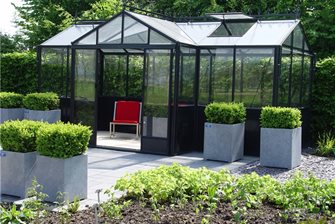 This lightweight glass and metal greenhouse provides a tidy modern look within a landscape.
This lightweight glass and metal greenhouse provides a tidy modern look within a landscape.
-
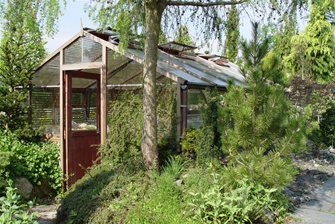 The vents atop this alpine greenhouse are opened by hand to allow hot air to escape.
The vents atop this alpine greenhouse are opened by hand to allow hot air to escape.
-
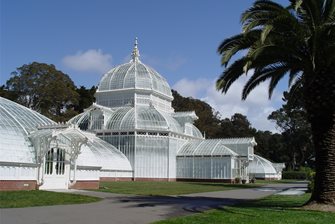 Greenhouse design reached its aesthetic peak during the high Victorian era.
Greenhouse design reached its aesthetic peak during the high Victorian era.
-
 An affordable cedar and fiberglass greenhouse offers seasonal use with a sharp roof line to ensure snow won't accumulate.
An affordable cedar and fiberglass greenhouse offers seasonal use with a sharp roof line to ensure snow won't accumulate.
-
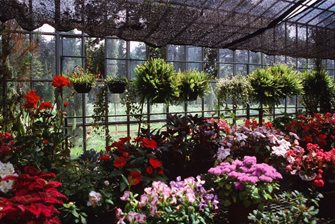 Here shade cloth is added to the inside of a residential greenhouse to protect tender plants from direct solar exposure.
Here shade cloth is added to the inside of a residential greenhouse to protect tender plants from direct solar exposure.
- 1
- 2
- 3
- 4
- 5
- 6
Integrating a greenhouse into a proposed residential site plan or adding one to an existing landscape will pay off on many levels. In the past such a structure was reserved for devotees of exotic plants such as orchids. Today desire for a healthy green lifestyle has driven new interest in home greenhouses that make it possible to grow food year around in some climates. Advancements in hydroponics also present new opportunities for growing vegetables out of season using this unique scientific method.
There are basically two types of permanent greenhouses to choose from: fiberglass with wood framework or more expensive glass with metal framework. Metals will prove the most long lasting and able to withstand considerable snow loads. Wood is vulnerable to rot and the fiberglass may become brittle over time. The ultimate choice is usually dictated by cost.
A greenhouse may be outfitted with all the accessories to extend plant growth in the most difficult seasons. High tech fans circulate air and open venting, heaters take the chill out of winter, coolers are essential in summer and lighting allows plant care after dark. For hydroponics or for winter food growing, you may decide on full spectrum illumination. All of this may be done on thermostats and automatic timers that ensure a perfect environment for plants while you're away or at work.
Temporary Greenhouses
Most other types of greenhouses large and small are considered temporary. This is because they are Quonset shape or hoop-house designs which are covered with sheeting. While professional sheeting is relatively long lasting, it may break down in as little as two years depending on the climate. In general, high winds or heavy snow place additional strain on both structure and sheeting.
A permanent greenhouse is more than just a structure, it is a functional man-made environment. It must be designed into the landscape in a way that ensures it is fully functional, so that plants will thrive inside. Failure to focus on the details of location and orientation may result in an environment unable to meet the needs of your plants no matter how much care you provide.
1. LocationA top notch greenhouse can become the jewel of a landscape if it's well made and attractively designed. Less expensive models often used in backyards may not be as visually appealing, but are just as productive. Proper location balances the functional needs of this structure with its visibility in the landscape.
When considering proposed locations, beware of cold air movement. Avoid low lying frost pockets or the toe of a slope where cold air gathers because this can cause the interior to become unusually cool in winter. Be aware of drainage from the greenhouse itself, which is an inevitable part of plant care. This drainage may be integrated into a system of storm water runoff directed around the structure so there is no chance of it pooling around the base of the walls and foundation.
- Pro Tip: Thermal mass is a passive solar term used to describe a high density concrete slab or block wall that absorbs heat from the sun during the day. At night when the ambient air temperature drops, that stored heat is released into the structure. Pour a concrete floor or use masonry stem walls for thermal mass in the construction of your greenhouse and it will be naturally warmer at night.
2. ExposureSolar orientation is critical to a successful greenhouse. Most are rectangular in shape with the long sides designed for direct exposure. Where it's only used in the winter months, the greenhouse must be fully exposed on the south side in December. This allows maximum light to pass into the interior space. In a year around greenhouse, the exposure should be ideal in June too, when the sun crosses directly overhead. This will be the deciding factor governing how to orient the greenhouse for optimal production. Make sure no trees, buildings or other structures are close enough to cast a shadow that might interfere with full exposure.
- Pro Tip: A glass greenhouse may be equipped with shade screens to help keep the interior cooler in the summer. It also prevents burning and overheating with direct exposure intensified by the glass in the summer months.
3. UtilitiesA greenhouse will require venting. Someone must be there to open the vents on a hot day to avoid overheating the contents. This is why it's important to include the mechanical accessories that make the structure self sufficient. That means a fully functional greenhouse will require electricity, and propane or natural gas will prove the most affordable heating.
When designing a future landscape to include a greenhouse, be sure to provide for water, power and possibly gas in the immediate area. You may find that installing a fully mechanized greenhouse in an existing landscape is complicated by demand for such utilities. Water is most important, so install a hose bib inside the greenhouse. This water source will also support an automatic irrigation system. Running power a long distance is expensive, but it's a worthwhile upgrade if you plan on automatic watering systems, fans and full spectrum lighting.
Hydroponics
The art and science of hydroponic gardening is flourishing undetected in homes and greenhouses all over America. This emerging industry is supplied by hydroponic stores, not traditional garden centers. A greenhouse well built can apply the latest technology to the growing of food plants through the winter. Such an operation takes time to set up, but once operational it becomes the best source of year around organic hot house produce.
4. AccessIn regions where a greenhouse is used often, access should include a convenient path to its door for easy access to pick food or water each day. This may mean a protected path for reaching the greenhouse in inclement weather. This is particularly important for use during the winter months. There should also be easy access to areas where tools, supplies and raw materials such as bulk potting soil are stored if they aren't kept inside.
A greenhouse is an essential if you are a gardener. For others, it offers a perfect place to learn how to garden. But should you decide not to use it for plants in the future, the properly located and oriented greenhouse makes a perfect outdoor living space when it's too cold to relax outdoors.
Greenhouse Accessories
- Benches and shelves: Increases the number of plants you can grow and also provide a comfortable work surface for potting.
- Irrigation: Makes sure your plants are watered on a schedule.
- Cooler: Cools the greenhouse on hot summer days.
- Ventilation: Thermostatically controls the opening of vents for fresh air when needed.
- Lighting: Provides full spectrum light to extend the hours of daylight to midwinter crops.
- Heater: Keeps frost outside the greenhouse on cold nights and days.
- Shade Cloth: Shades the contents of the greenhouse from over exposure.
|
Contributing Author: Maureen Gilmer, contributing writer for Landscaping Network, author and syndicated columnist |



 Gardening Ideas
Gardening Ideas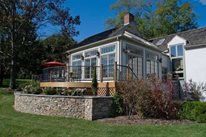 Sunrooms
Sunrooms Screened Porches
Screened Porches

